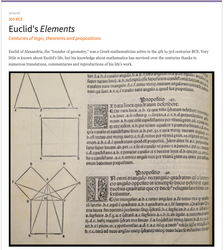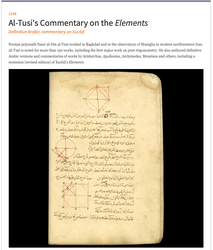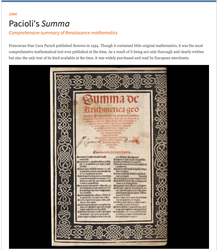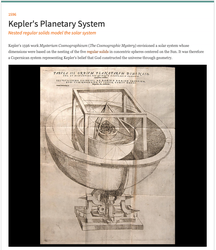around1495
Funding for this project generously provided by Overdeck Family Foundation
In the Museo e Real Bosco di Capodimonte in Naples, Italy, you can admire the portrait of the Renaissance mathematician Luca Pacioli giving a lesson in geometry:
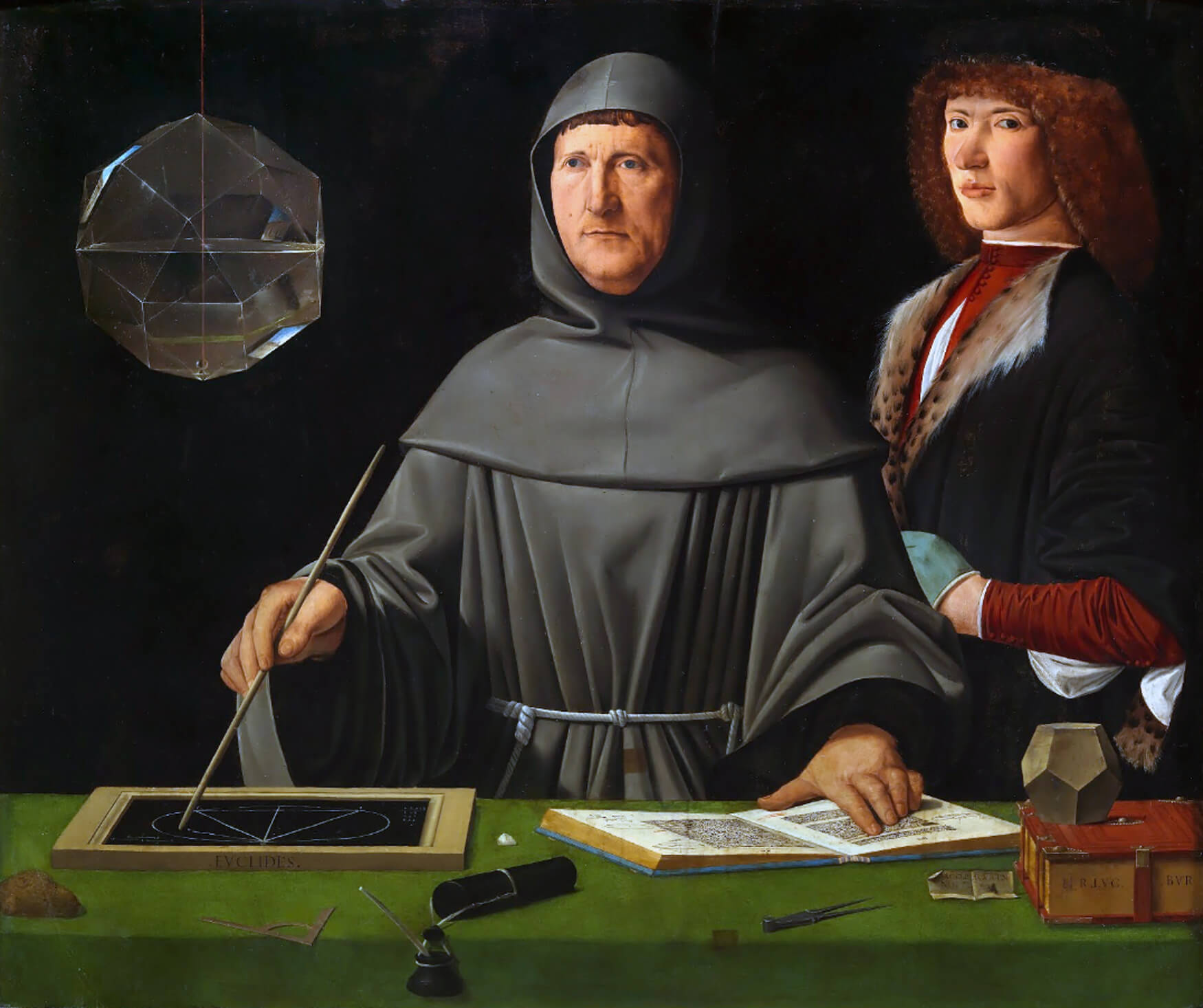
Luca Pacioli was one of the most famous mathematicians from the Renaissance period. Pacioli was a Franciscan monk and educator who lived in Italy in the fifteenth century. Pacioli had an interest in mathematics that he shared with his acquaintance Leonardo da Vinci.
We don't know who painted this portrait, although many scholars attribute it to Jacopo de' Barbari. Others think that the painting isn't the work of one artist, and that parts of it may have been painted by da Vinci himself. What we do know for sure is that the portrait of Luca Pacioli is absolutely full of mathematics.
The Most Famous Textbook Ever Published: Euclid's Elements
Upon the table rest the instruments of a mathematician: a sponge, a protractor, a pen, a piece of chalk and a compass.
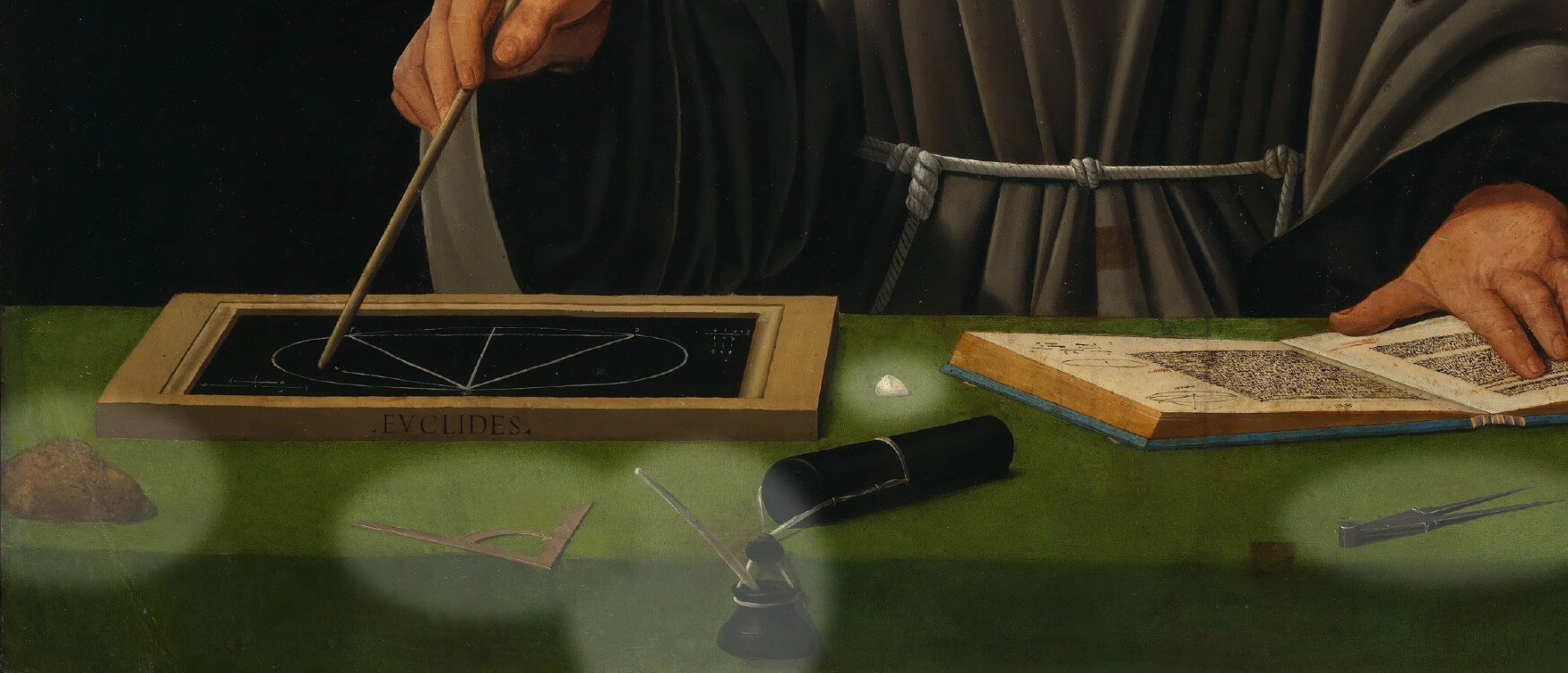
The portrait also shows Luca Pacioli drawing a construction on a blackboard, the edge of which bears the name Euclides.
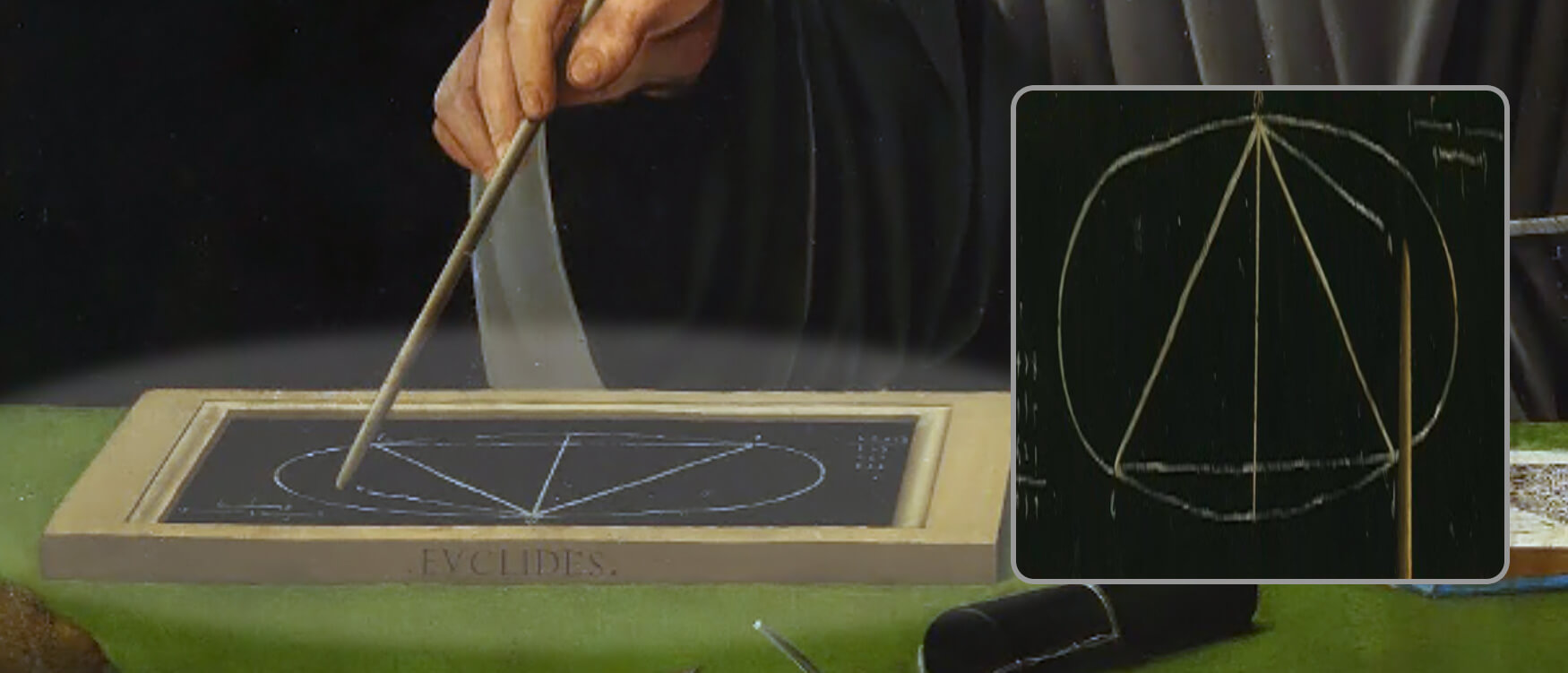
In the portrait, Pacioli is copying a diagram from volume XIII of Euclid's Elements, the encyclopedic work of the ancient Greek mathematician Euclid. During the Middle Ages, this text was known only in Latin and in Hebrew translations from the Arabic and available in numerous manuscripts.
In May 1482, Erhard Ratdolt's workshop in Venice published the very first printed edition of Euclid's Elements, an edition based on a Latin translation made around 1260 by the medieval mathematician Johannes Campanus.
Campanus's translation, which became the standard of Euclid's Elements in Europe for more than two hundred years, was written long before the printing press was invented in 1440. This meant that all these diagrams had to be copied over and over by hand! In the portrait, Pacioli's left hand rests upon page 236 of the second printed edition, which was published in Venice in June 1491.
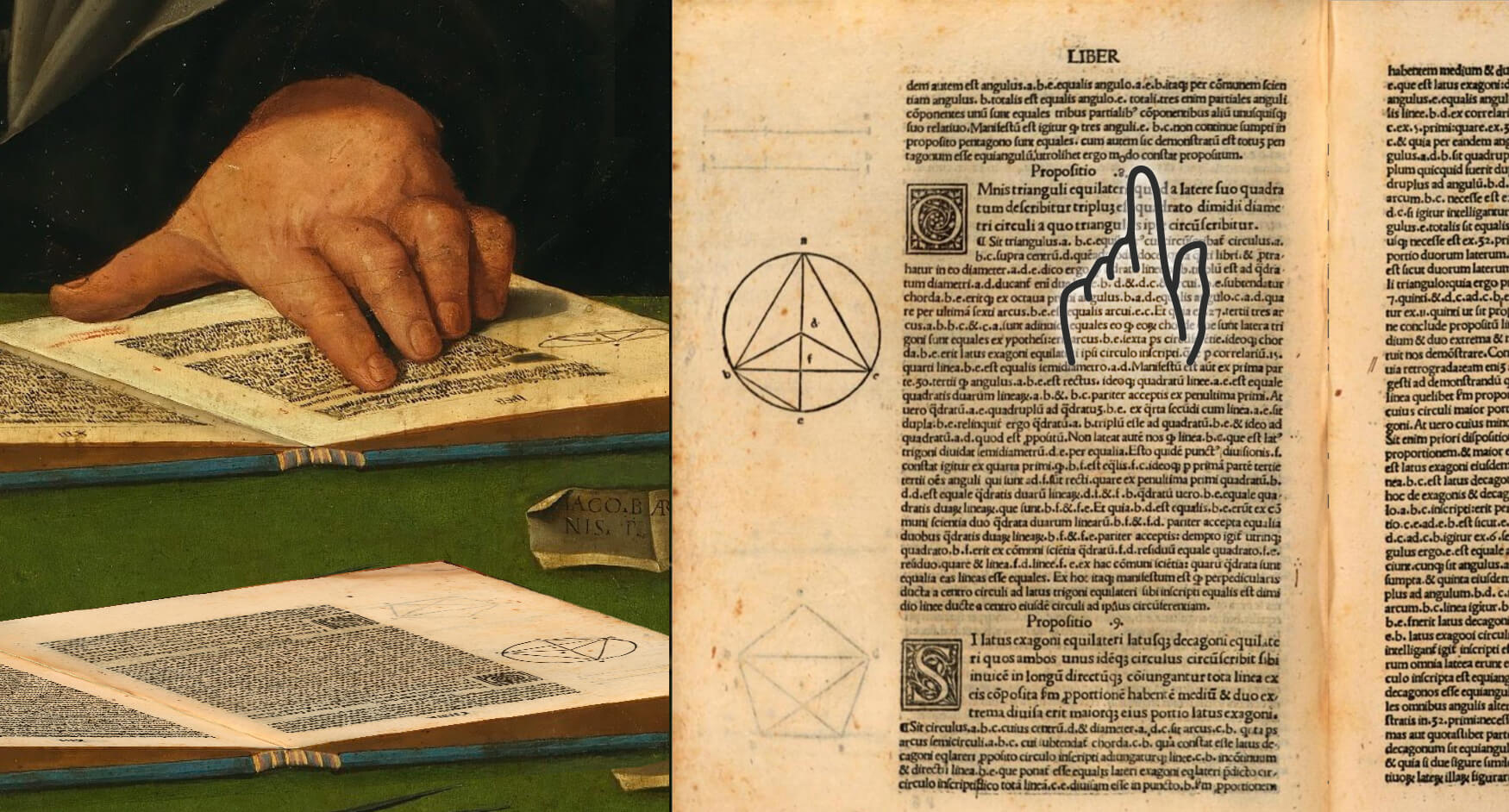
Printed in Venice by Leonardus de Basilea and Gulielmus de Papia, 20 June 1491.
Luca Pacioli: The Father of Accounting
Seen on the right, there is a wooden model of a dodecahedron, the Platonic solid associated with the universe, the fifth element ether.
The model is resting on top of Pacioli's book, Summa de Arithmetica, Geometria, Proportioni et Proportionalità. In 1494, Pacioli went to Venice to publish his Summa, a six-hundred-page, encyclopedic treatise that compiled the mathematical knowledge of the time in arithmetic, algebra, geometry and trigonometry.
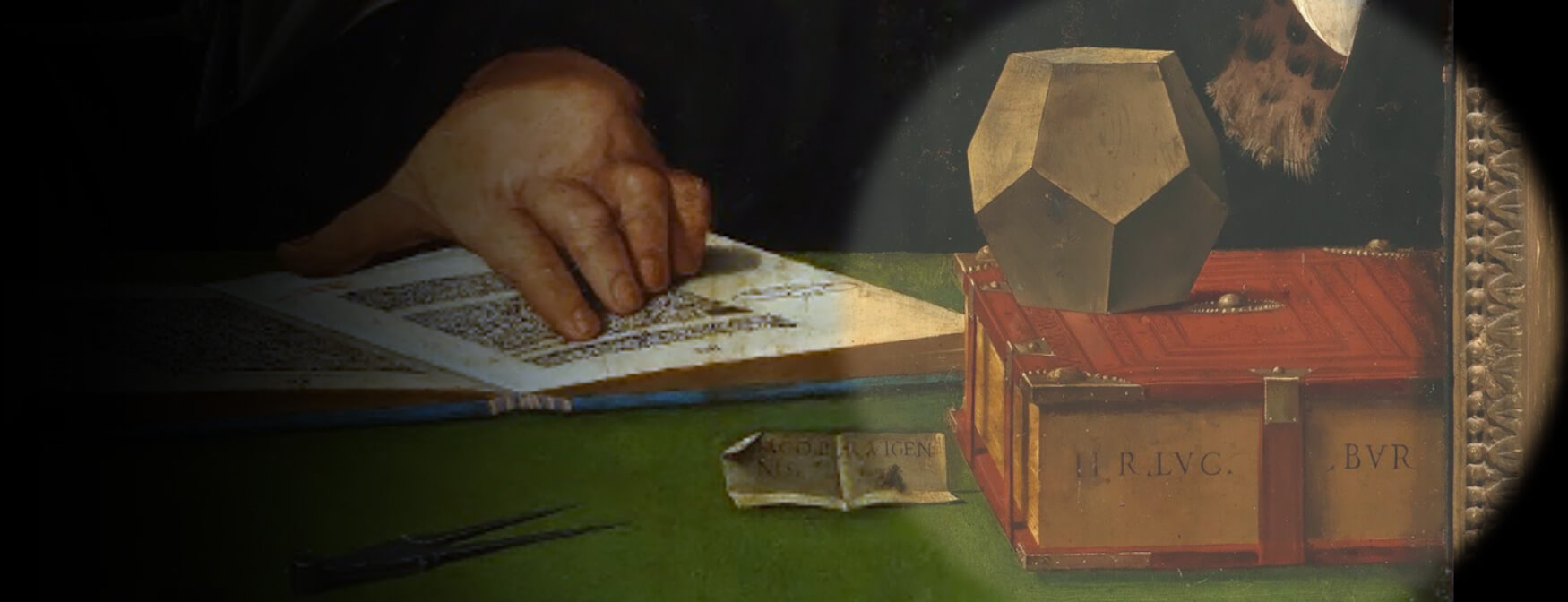
In this book, Pacioli borrows freely problems in algebra and geometry from Fibonacci and others. The most celebrated part of the Summa is on double-entry accounting, a method of record keeping that lets you track where money comes from and where it goes.
Pacioli did not invent this system, but he summarized the practices of Renaissance merchants, so Summa is considered to be the first-ever published book on accounting. The double-entry bookkeeping system published by Pacioli is the direct ancestor of the spreadsheet, which in turn led to the success of the personal computer today.
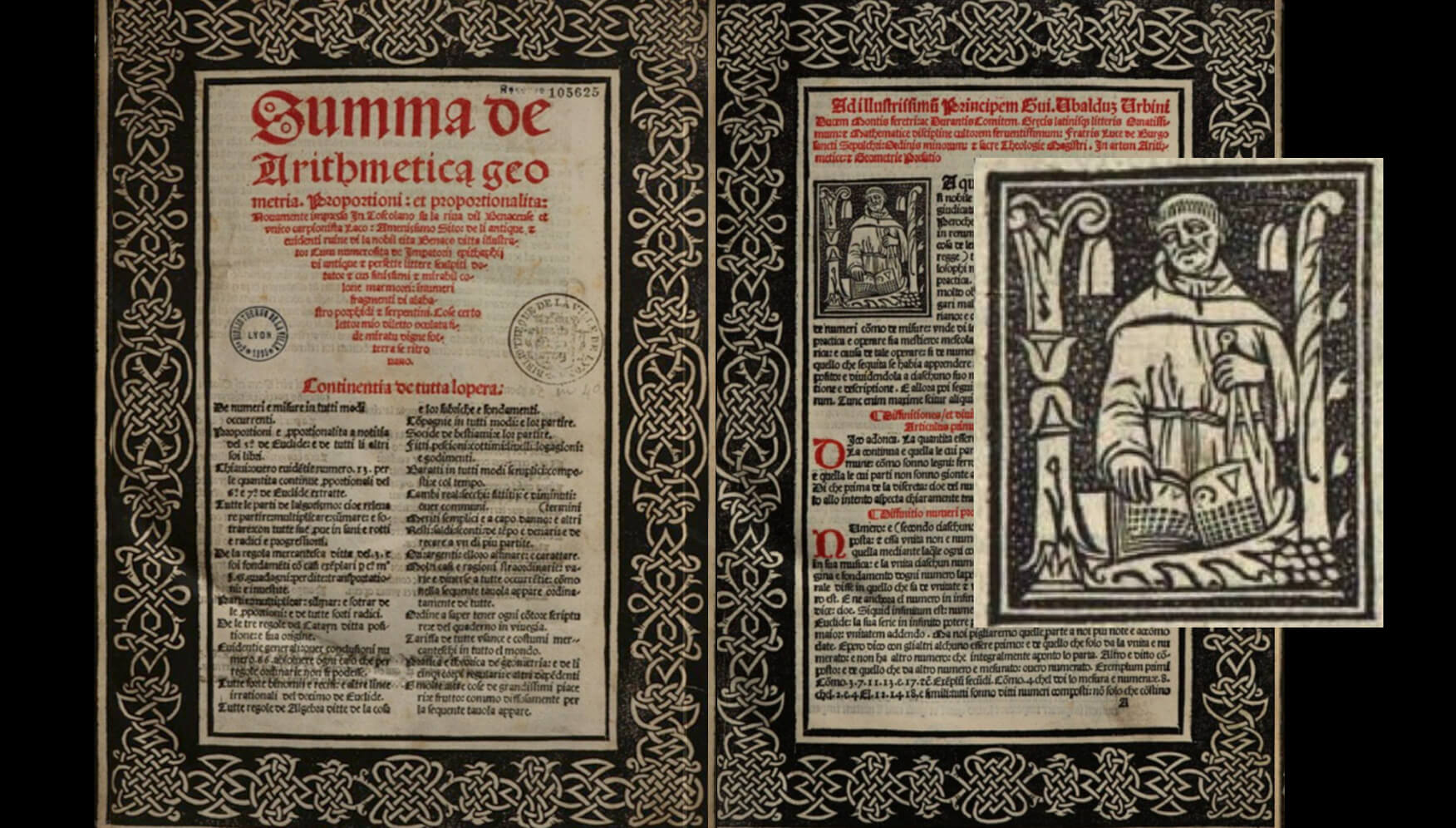
The Divine Proportion
Pacioli and da Vinci exchanged ideas about mathematics, perspective and proportion while they worked together in Milan. Da Vinci's The Last Supper (1490s), one of his most famous paintings, shows some influence from Pacioli, and, in return, da Vinci's influence can be seen in many of Pacioli's works. A good example of this is in Pacioli's three-volume treatise Divina Proportione (The Divine Proportion), which was eventually published in Venice in 1509.
Leonardo da Vinci illustrated two versions of the original manuscript of Divina Proportione. One of them is in the Biblioteca Ambrosiana in Milan and the other in the Bibliothèque Publique et Universitaire in Geneva. Explore the 60 illustrations from the manuscript copy of Pacioli's Divina held by the Biblioteca Ambrosiana in Milan:
To illustrate Pacioli's manuscript, Leonardo da Vinci introduced an innovative method using skeletonic solids to allow an easy distinction between the fronts and backs of the polyhedra.
In addition to the diagrams for Pacioli's book, we can find sketches of many solids scattered throughout da Vinci's own notebooks. See, for example, folio 518-r from Codice Atlantico:
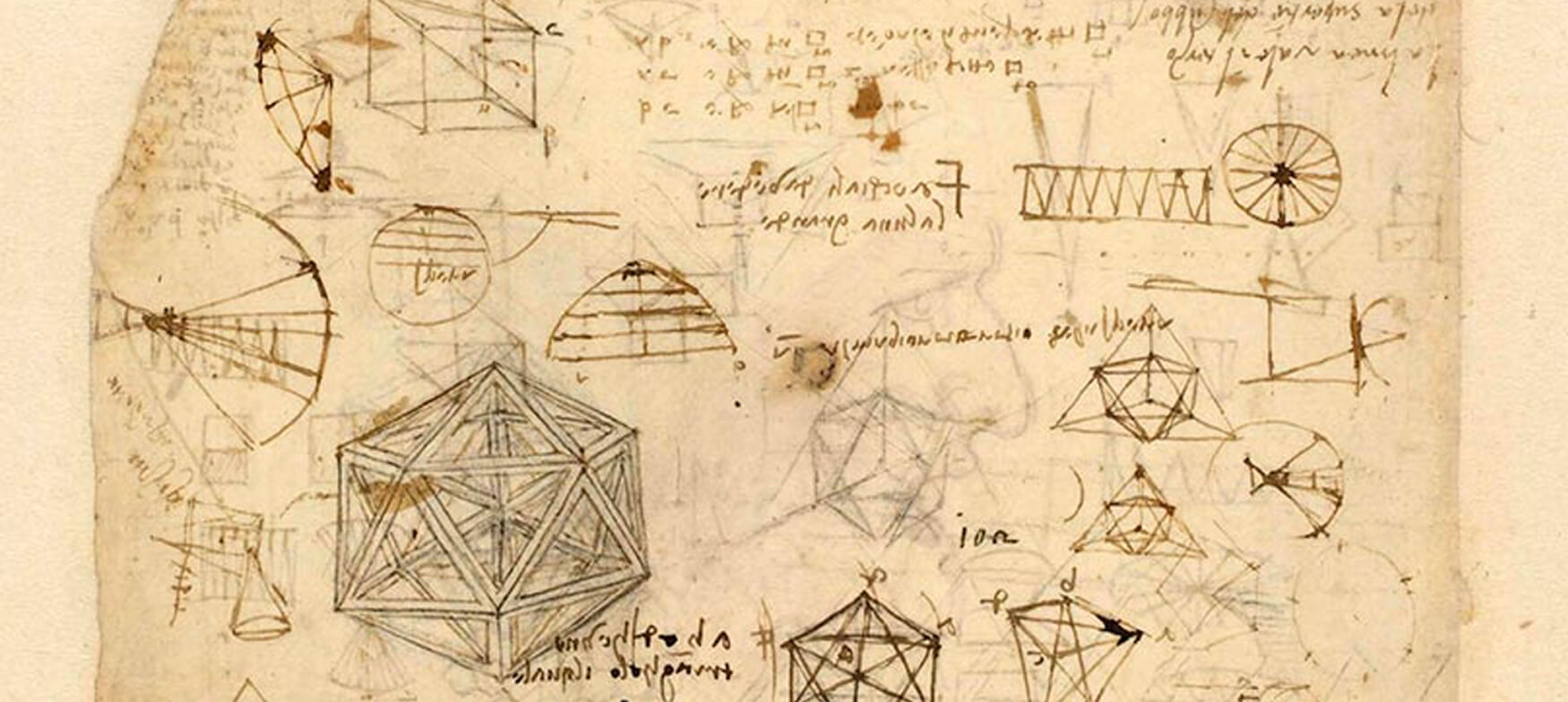
The first volume of Divina Proportione contains a detailed summary of the properties of the golden ratio, which Pacioli refers to as the "divine proportion," and a study of the five Platonic solids and other polyhedra.
The third volume of Divina Proportione is essentially an Italian translation of Piero della Francesca's The Five Regular Solids. Note that the book by Piero della Francesca (1420–1492), one of the most original men of the Early Renaissance and a great mathematician, tutored the young Luca Pacioli in geometry, proportions and perspective.

Albrecht Dürer's Nets of Polyhedra
Referring back to the painting, one of the suggested identities for the pupil to the right of Luca Pacioli is Albrecht Dürer. Interestingly, like Kepler, he also explored tilings and designs containing figures with fivefold symmetry:
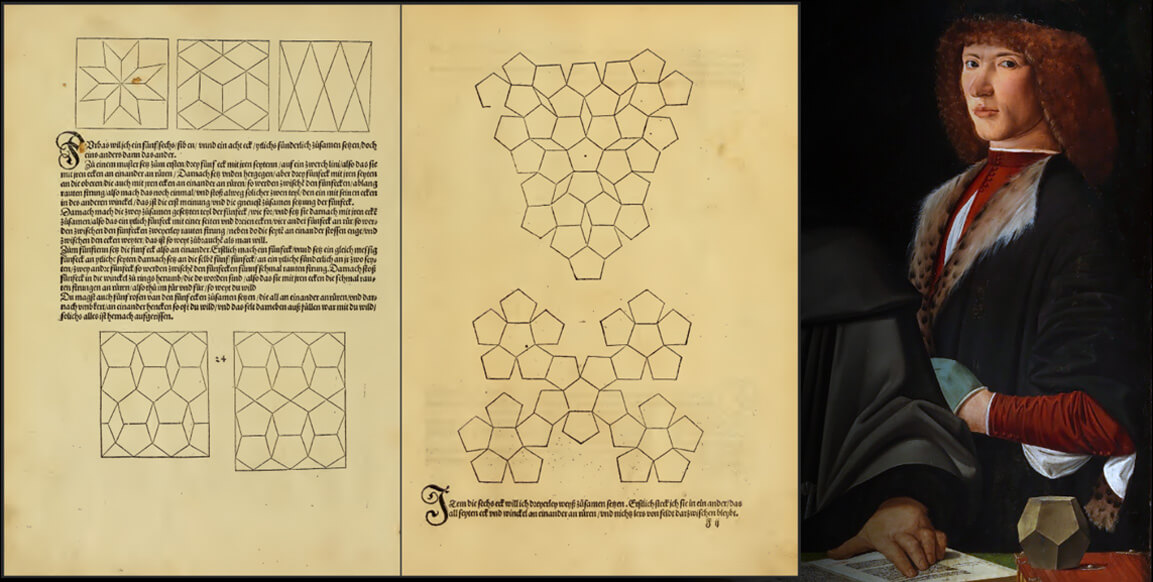
Dürer's contributions to the history of the golden ratio come both in the form of written work and through his art. His major treatise, Unterweisung der Messung mit dem Zirkel und Richtscheit (Treatise on Measurement with Compass and Ruler), was published in 1525 and was one of the first books on mathematics published in German.
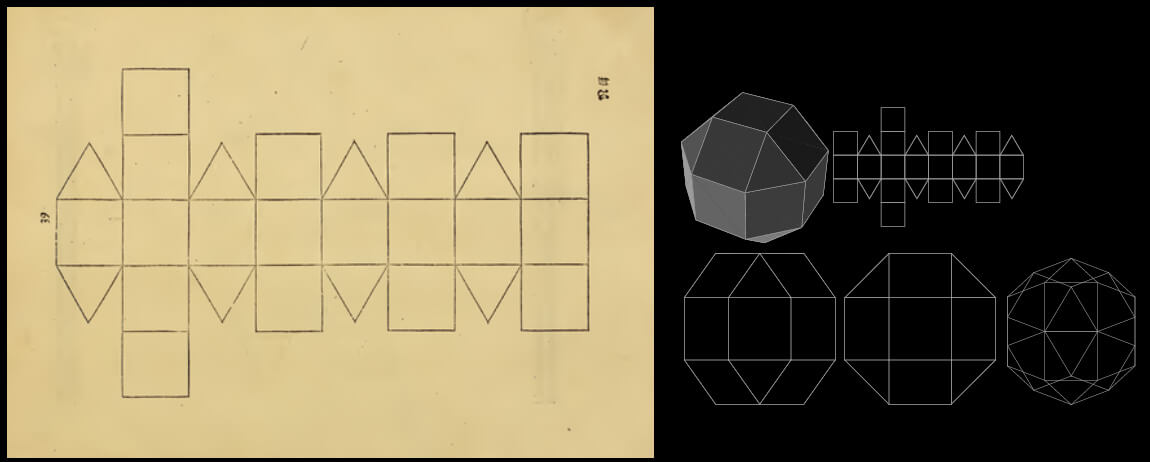
The book contains some of the earliest presentations of nets of polyhedra. These are plane sheets on which the surfaces of the polyhedra are drawn in such a way that the figures can be cut out and folded to form the three-dimensional solids. For example, Dürer's net illustration above generates a polyhedron with 18 squares and 8 equilateral triangles, known as the rhombic cuboctahedron.
This solid is depicted with extraordinary skill in the Portrait of Luca Pacioli. All the reflections and refractions are exposed, and the solid is half-filled with water and hanging in midair, symbolizing the purity and timelessness of mathematics.
To the casual observer, the portrait of Luca Pacioli is that of a mathematician and student. Look a bit closer and you'll find a glimpse into Renaissance-era mathematics.
Find Out More About:
Visit the online History of Mathematics exhibit to learn more!
Further Reading
- Andrews, N. "Tabula III: Kepler's Mysterious Polyhedral Model." Journal for the History of Astronomy, Vol. 48, pp. 281–311, 2017.
- Baldasso, R. "Portrait of Luca Pacioli and Disciple: A New Mathematical Look." The Art Bulletin, Vol. 92, No. 1–2, pp. 83–102, March–June 2010.
- Field, J. V. "Rediscovering the Archimedean Polyhedra: Piero della Francesca, Luca Pacioli, Leonardo da Vinci, Albrecht Dürer, Daniele Barbaro, and Johannes Kepler." Arch. Hist. Exact Sci., Vol. 50, pp. 241–289, 1997.
- Livio, M. The Golden Ratio: The Story of Phi, the World's Most Astonishing Number. New York: Broadway Books, 2002.
- Mackinnon, N. "The Portrait of Fra Luca Pacioli." The Mathematical Gazette, Vol. 77, No. 479, pp. 130–219, 1993.
- Pacioli, L. De Divina Proportione. 1498. Bibliothèque de Geève [link]
- Pacioli, L. De Divina Proportione. 1509 printed edition. Venice, Paganinus de Paganinis. [link]
- Pacioli, L. La divina proporción—Ediciones Akal, 4th edition. Spanish edition of De divina proportione (Trans. Juan Calatrava). 2004.
- Sangster, A. "Luca Pacioli and His Art." De Computis—Revista Española de Historia de la Contabilidad, Vol. 17, No. 2, pp. 9–27, 2020. [link]
Additional Links
- Biblioteca Leonardiana. e-Leo, Digital archive of history of technology and science. [link]
- da Vinci, L. Bust of a man in profile with proportions, study of a horse and riders. [link]
- Dürer, A. Principles of Geometry, Paris, 1535. [link]
- Elementa geometriae. Preclarissimus liber elementorum Euclidis perspicacissimi: in artem geometrie incipit quamfoelecissime. Venice: Leonardus de Basilea and Gulielmus de Papia, 20 June 1491. Digitized from the Library of Catalonia, 18 November 2009. [link]
- Google Arts & Culture. Portrait of Fra Luca Pacioli. Museo e Real Bosco di Capodimonte, Napoli, Italy. [link]
- Green, D. The Divine Proportion and a life-long Renaissance friendship. Thinking 3D—University of St Andrews. [link]
- Hart, G. Leonardo da Vinci's Polyhedra. [link]
- Hart, G. Fra Giovanni's Intarsia Polyhedra. [link]
- O'Connor, J. and Robertson, E. Luca Pacioli on MacTutor History of Mathematics. [link]
- O'Connor, J., Robertson, E. and Field, J. Piero della Francesca on MacTutor History of Mathematics. [link]
- O'Connor, J. and Robertson, E. Leonardo Pisano Fibonacci on MacTutor History of Mathematics. [link]
- MathWorld. Printable net for the rhombic cuboctahedron. [link]
- Roelofs, R. Polyhedra—Leonardo da Vinci, Luca Pacioli. [link]
- Serras, H. Mathematics on the Ritratto di Frà Luca Pacioli. [link]
- Wolfram, S. "The Empirical Metamathematics of Euclid and Beyond." September 28, 2020. [link]
- Wolfram, S. "The Story of Spikey." December 28, 2018. [link]
